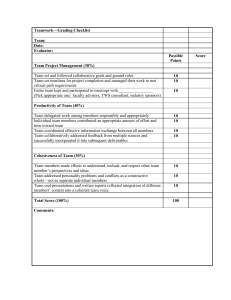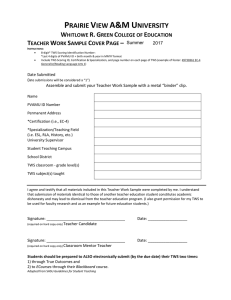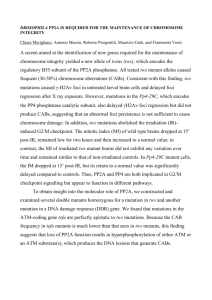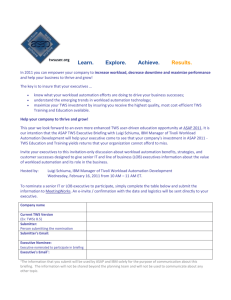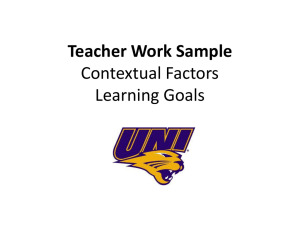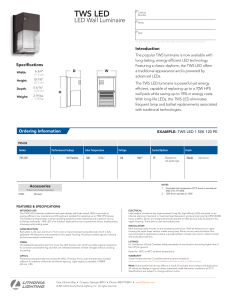Teacher Work Sample (TWS) (Form N)
advertisement
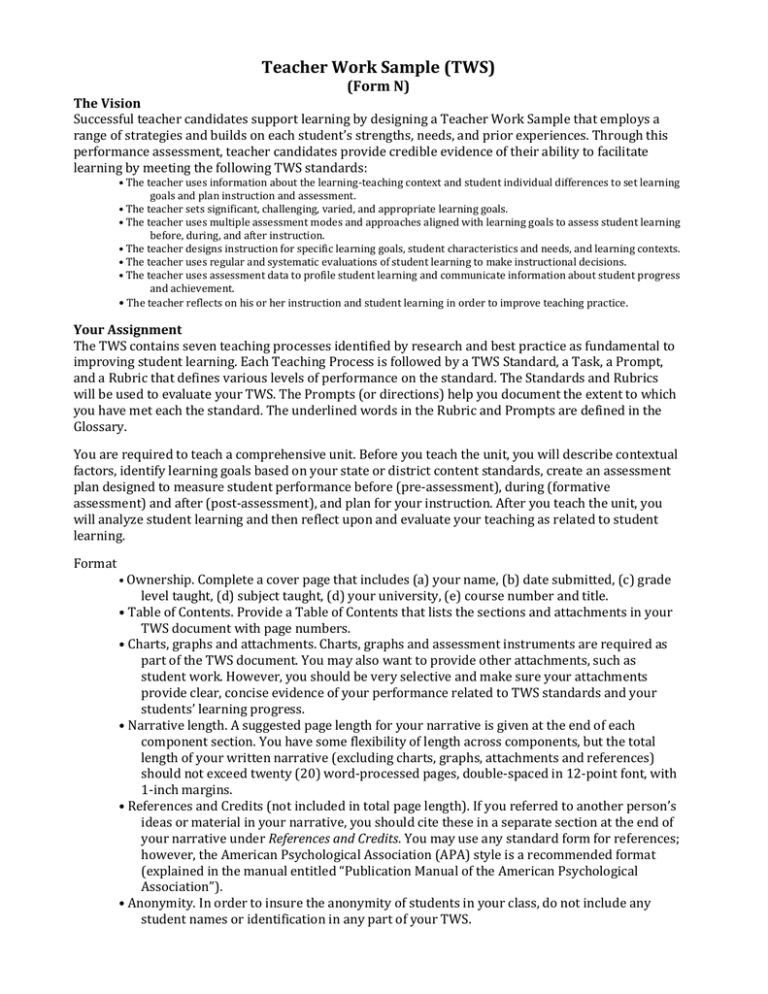
Teacher Work Sample (TWS) (Form N) The Vision Successful teacher candidates support learning by designing a Teacher Work Sample that employs a range of strategies and builds on each student’s strengths, needs, and prior experiences. Through this performance assessment, teacher candidates provide credible evidence of their ability to facilitate learning by meeting the following TWS standards: • The teacher uses information about the learning-teaching context and student individual differences to set learning goals and plan instruction and assessment. • The teacher sets significant, challenging, varied, and appropriate learning goals. • The teacher uses multiple assessment modes and approaches aligned with learning goals to assess student learning before, during, and after instruction. • The teacher designs instruction for specific learning goals, student characteristics and needs, and learning contexts. • The teacher uses regular and systematic evaluations of student learning to make instructional decisions. • The teacher uses assessment data to profile student learning and communicate information about student progress and achievement. • The teacher reflects on his or her instruction and student learning in order to improve teaching practice. Your Assignment The TWS contains seven teaching processes identified by research and best practice as fundamental to improving student learning. Each Teaching Process is followed by a TWS Standard, a Task, a Prompt, and a Rubric that defines various levels of performance on the standard. The Standards and Rubrics will be used to evaluate your TWS. The Prompts (or directions) help you document the extent to which you have met each the standard. The underlined words in the Rubric and Prompts are defined in the Glossary. You are required to teach a comprehensive unit. Before you teach the unit, you will describe contextual factors, identify learning goals based on your state or district content standards, create an assessment plan designed to measure student performance before (pre-assessment), during (formative assessment) and after (post-assessment), and plan for your instruction. After you teach the unit, you will analyze student learning and then reflect upon and evaluate your teaching as related to student learning. Format • Ownership. Complete a cover page that includes (a) your name, (b) date submitted, (c) grade level taught, (d) subject taught, (d) your university, (e) course number and title. • Table of Contents. Provide a Table of Contents that lists the sections and attachments in your TWS document with page numbers. • Charts, graphs and attachments. Charts, graphs and assessment instruments are required as part of the TWS document. You may also want to provide other attachments, such as student work. However, you should be very selective and make sure your attachments provide clear, concise evidence of your performance related to TWS standards and your students’ learning progress. • Narrative length. A suggested page length for your narrative is given at the end of each component section. You have some flexibility of length across components, but the total length of your written narrative (excluding charts, graphs, attachments and references) should not exceed twenty (20) word-processed pages, double-spaced in 12-point font, with 1-inch margins. • References and Credits (not included in total page length). If you referred to another person’s ideas or material in your narrative, you should cite these in a separate section at the end of your narrative under References and Credits. You may use any standard form for references; however, the American Psychological Association (APA) style is a recommended format (explained in the manual entitled “Publication Manual of the American Psychological Association”). • Anonymity. In order to insure the anonymity of students in your class, do not include any student names or identification in any part of your TWS.

